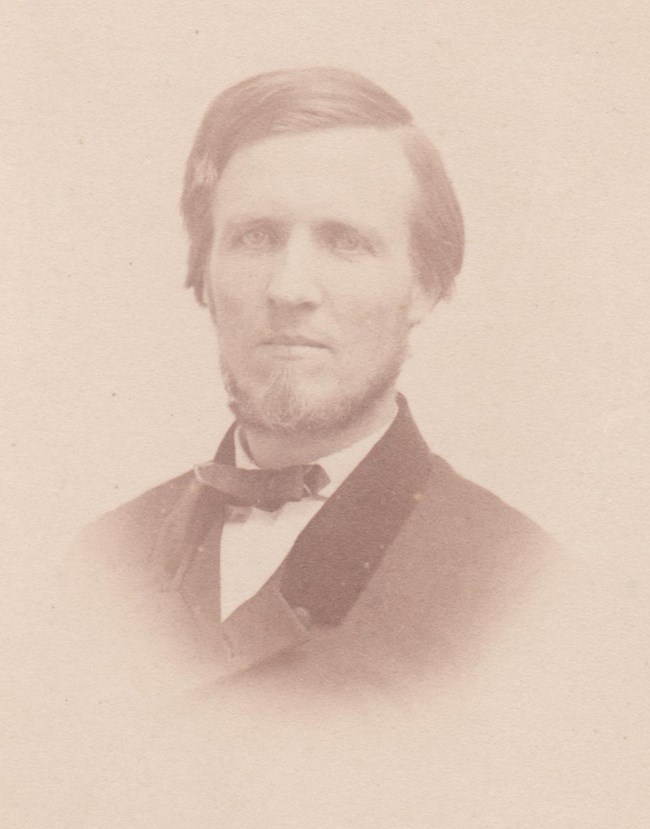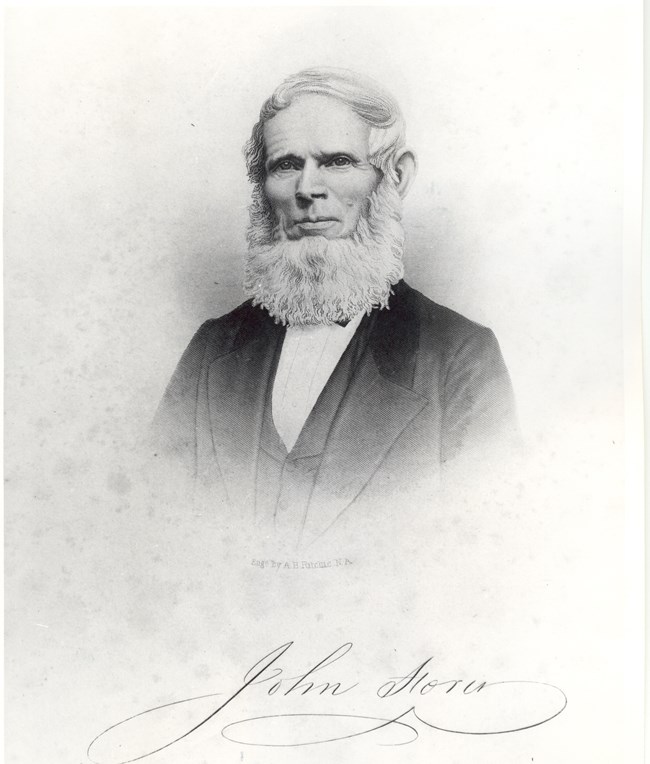
Harpers Ferry NHP Museum Collection, Catalog #4952
Following the Civil War there were over 30,000 people newly freed from slavery in the Shenandoah Valley. Recognizing the need for education, the Freedmen’s Bureau, the Freewill Baptists of New England and John Storer came together and Storer College was born. The school survived for 88 years, enriching the lives of its students and the community.

From a CDV, courtesy of Todd Bolton Of the four million people freed by the 13th Amendment at the end of the Civil War, most wanted two things—find family members and get an education. A small school in Harpers Ferry soon became a shining example of educational outreach and accomplishment. What began as a one-room missionary school for the formerly enslaved grew into a college open to both sexes and all races. 
Harpers Ferry NHP Historic Photo Collection, HF-01168 A New BeginningThe Freewill Baptist mission school in Harpers Ferry came to the attention of John Storer, a wealthy businessman in Maine. Storer offered a $10,000 matching grant to the Freewill Baptists. An intense effort to raise donations, mortgage assets and seek government funds added up to $10,000 the day before Storer’s offer expired. The EndIn 1954, the Supreme Court’s Brown v. Board decision ended segregation in public schools. The next year West Virginia’s Board of Education recommended ending the $20,000 annual stipend for Storer. The board preferred to support state sponsored schools that were centrally located with modern buildings and more students, and without debt and religious overtones. Finally, Storer College closed its doors in 1955. The school had provided an education to more than 7,000 students. The Legacy of Storer CollegeA very small school started in 1865 with a straightforward mission: to provide an education to formerly enslaved men and women. For 25 years Storer College was the only school in West Virginia where any person of color could get an education beyond the primary level. In a quiet though important way, Storer symbolized something seldom seen today; the epitome of selflessness and a willingness to sacrifice for the benefit of mankind. The students and staff embodied the Storer College motto: Labor Omnia Vincit Explore the Former CampusMany of the former campus' buildings are still within the national park today. Click on the pins on the map to learn more about the buildings of Storer College. Hear alumni of Storer College in their own words. 
Harpers Ferry NHP Museum Collection, Catalog #11427(2) Listen to stories of Storer college told by the students themselves. Each link will take you to the Integrated Resource Management Application IRMA store. From there you can click the audio file to listen to the stories or download the transcript to read the stories. Source: NPS DataStore Collection 9263 (results presented are a subset). To search for additional information, visit the NPS DataStore. |
Last updated: October 24, 2023
